Varicose vein in relation to venous disease. Chronic Venous Insufficiency as a result of vein reflux in the superficial veins is a common disease affecting many people and maybe even for a long time without management or treatment. If the condition is not treated on time, it can lead to complication that ultimately affects and limits the life of those who suffer from this condition.
Current management options as technology advances are called minimally invasive techniques. Nowadays, minimally invasive procedures are used to treat venous reflux, replacing in great percentage surgical procedures such as ligation and stripping where a deep incision had to be made at the groin area as well as other surgical cuts at the knee and below. Some of the surgical procedures had the risk of complications like nerve and lymphatic system damage as well as long recovery time after the procedure.
Minimally invasive procedure options. One of the procedures done currently with minimal access in place of surgical procedures that were done in the past is called Endovenous Ablation. The latest endovenous ablation technique is called radiofrequency ablation which is not invasive like the surgical procedure and produces less complications than surgery as well. This procedure was approved by the FDA more than 17 years ago, back in 1999 and since then it has had excellent results and patient outcome as well as fine cosmetic results for varicose veins.
The technology behind radiofrequency ablation can be explained very easily. High frequency flow of energy targets the refluxing vein in the form of heat delivered to the tissue through a special catheter which tip is heated by radio frequency energy. The refluxing vein receiving the treatment with heat begins to shrink around the catheter as the catheter is taken out after treating each portion of the bad vein. The special catheter used is called Closure catheter which is manufactured by VNUS Medical Technologies, only one commercially available for radiofrequency ablation. There are 2 sizes of catheters that are frequently used and depending on the size of the vein, the vein expert chooses the correct size for the patient.
Procedure technique. When venous insufficiency is diagnosed in one of the superficial veins like great saphenous vein and small saphenous vein. One of the procedure choice that can be used to target the vein is radiofrequency ablation. Ultrasound imaging is one of the tools that vein specialist uses to image the anatomy and pathology. A map is also marked in the skin of the patients in many cases to help the vein specialist design his approach and point of entry. The limb is properly cleaned and local anesthesia is used to access the vein. Local anesthesia is also applied to the entire vein portion to be treated. Vein expert uses ultrasound imaging throughout the procedure to visualize the catheter advancing to the correct position to start delivering the high frequency energy far enough from the deep veins, only targeting the refluxing superficial vein. Catheter is withdrawn with exactitude by the vein specialist at the same time that each portion of the vein shrinks.
After the radiofrequency ablation then what? After the catheter has been completely removed, the leg is cleaned and small incision is covered and rapped. The imaging ultrasound is used to check that the vein shrank and that there is no flow inside the targeted vein. There is no need to repeat this procedure in the vein that was treated because typically the procedure works very well.
Measures to take good care of the targeted vein. After the procedure and ultrasound confirmation right after the treatment, medical compression stockings are placed in the patient’s leg with a pressure of at least 20-30 mmHg. The reason why the compression stockings are used is to reduced any pain or bruising as well as to help the the legs with the venous circulation. Stockings are recommended to be in placed without removal for the first day and night. Then, they can be on only during the day and not at night while sleeping. If the patient agrees, compression stockings can be used also in both of legs, the treated and the untreated leg, to improve venous flow circulation. It is recommended to not do weight lifting and heavy exercises for two weeks after the treatment; however, normal activities and walking are important to maintain and are advised. Between 3 to 7 days after the procedure, the patient has to return to see the veins specialist for a follow up ultrasound imaging for a check of deep vein patency and closure of the treated vein. Vein expert then advises how to continue care.

